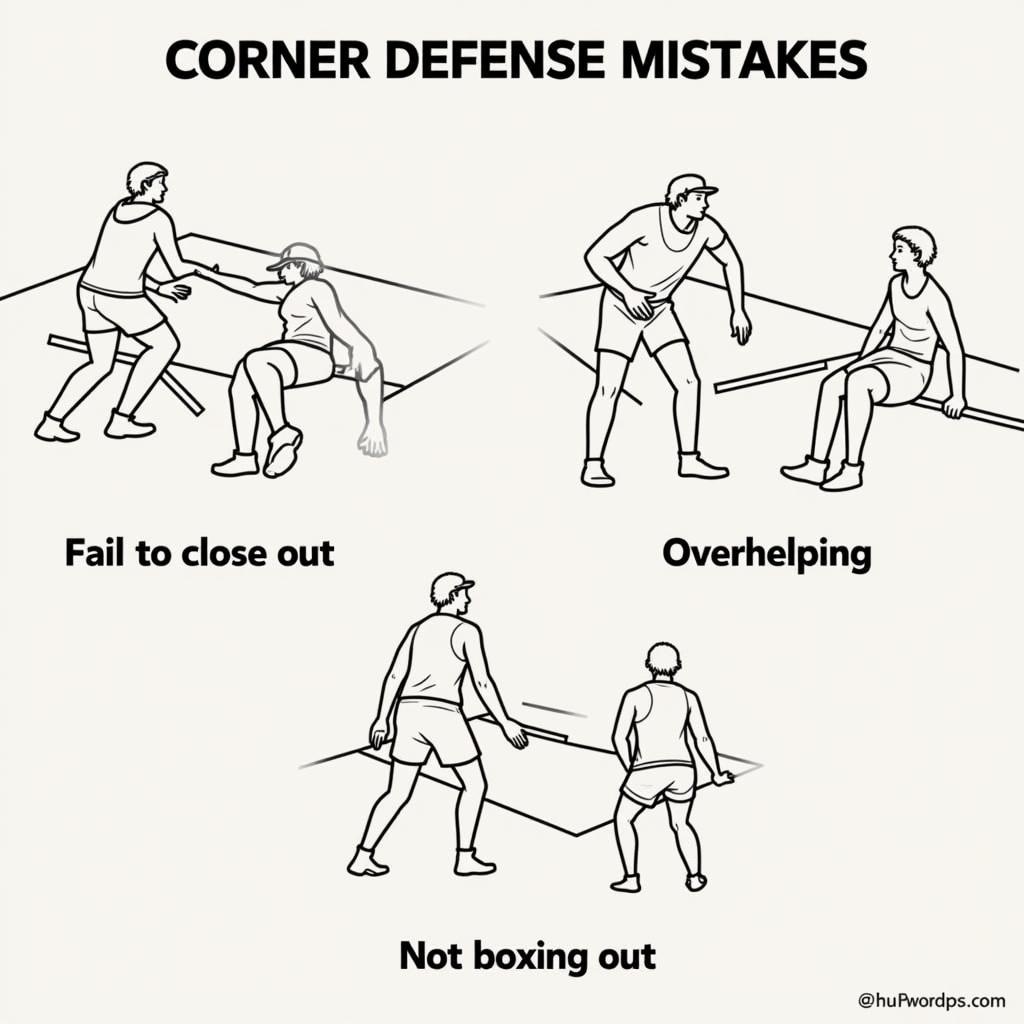Mastering Corner Defense in Basketball
October 15, 2024Corner Defense is a critical aspect of basketball that often gets overlooked. While defending the paint and preventing easy layups might seem like the top priority, neglecting the corner can lead to high-percentage shots for the opposing team. A strong corner defense can be the difference between a win and a loss, forcing turnovers and disrupting the offensive flow.
The Importance of a Strong Corner Defense
 Corner three-point shot
Corner three-point shot
Why is the corner so important in basketball defense? It all comes down to simple geometry and offensive strategy. The corner three-point shot is statistically proven to be one of the most efficient shots in basketball. The shorter distance to the basket and the angle of the shot create a higher percentage opportunity for offensive players.
A weak corner defense allows offensive players to set up camp in the corners, waiting for a pass and an open shot. This not only leads to easy points for the opposition but also stretches the defense thin. When defenders are forced to hug the corners, it opens up driving lanes and passing options for the offense, making the entire defensive structure vulnerable.
Key Elements of Effective Corner Defense
 Defensive stance and positioning
Defensive stance and positioning
Building a strong corner defense requires a combination of individual skills and team coordination. Here are the key elements to focus on:
1. Communication is Key
Constant communication between teammates is crucial, especially when rotating to cover the corner. Defenders need to call out screens, cuts, and drives to ensure the corner is never left unguarded.
2. Quick Reaction Time
Reacting quickly to the ball’s movement is vital in corner defense. Defenders need to be light on their feet, ready to close out on shooters or help teammates if the ball is driven inside.
3. Understanding Positioning and Angles
Proper positioning is crucial. Defenders should be close enough to the corner to contest a shot but not so close that they get beat on a drive. Understanding the angle of the player they are guarding and the position of the ball is key.
4. Defensive Schemes and Rotations
Teams often employ specific defensive schemes like pack line defense or zone defense that dictate how players rotate to cover the corner. Understanding these rotations and responsibilities is essential for a cohesive defensive unit.
Common Corner Defense Mistakes to Avoid
 Common corner defense mistakes
Common corner defense mistakes
Even experienced players can make mistakes when it comes to corner defense. Here are some common pitfalls to avoid:
- Failing to Close Out: This is perhaps the most common mistake. Hesitating or failing to close out on a shooter in the corner is a recipe for disaster.
- Overhelping: While helping teammates is important, overhelping on drives can leave the corner wide open. Defenders need to find the right balance between helping and staying home.
- Not Boxing Out: Offensive rebounds can easily lead to kick-out passes for open corner threes. Boxing out effectively is crucial to secure the defensive possession.
Drills to Improve Corner Defense
Improving corner defense requires dedicated practice and repetition. Incorporating drills that specifically target corner defense will yield significant results.
1. Close Out Drill
- Players line up at the free-throw line while another player stands in the corner.
- A coach throws the ball to the corner, and the defender closes out to contest the shot.
- This drill helps players practice their close-out speed and technique.
2. Shell Drill
- The shell drill simulates game-like situations with four offensive players and four defenders.
- The drill focuses on rotations, communication, and closing out on shooters in the corner.
Corner Defense: A Team Effort
Remember, corner defense is not solely the responsibility of the player guarding the corner. It’s a team effort that requires communication, trust, and precise execution. By mastering the fundamentals of corner defense, teams can significantly limit their opponent’s scoring opportunities and gain a competitive edge.